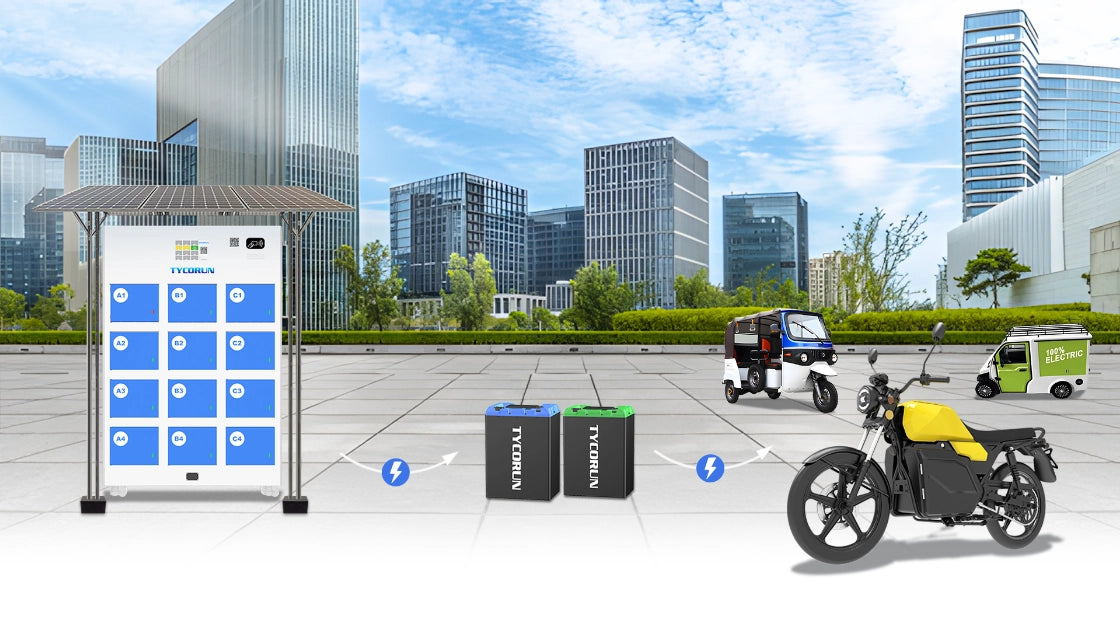As the demand for safe, cost-effective, and environmentally friendly energy storage grows, salt batteries have emerged as a promising alternative to lithium-ion batteries. The passage explores the advantages and disadvantages of high-temperature molten salt batteries and sodium-ion/saltwater batteries, analyzing their working principles, energy density, safety, and environmental impact. It also compares salt batteries with lithium batteries and discusses future prospects, application potential, and technological development, providing a comprehensive overview of this emerging energy storage technology.

Main content:
- Overview of High-Temperature Molten Salt Batteries
- Working Principle of High-Temperature Molten Salt Batteries
- Advantages of Molten Salt Batteries
- Disadvantages of Salt Batteries
- Safety and Environmental Advantages
- Comparison Between Salt Batteries and Lithium Batteries
- Future Prospects of Salt Batteries
- Application Potential of Salt Batteries
- Conclusion
- FAQs
Overview of High-Temperature Molten Salt Batteries
High-temperature molten salt batteries are a special type of battery that uses sodium chloride as the cathode, nickel-based metals as the anode, and β-alumina as the solid-state electrolyte. The structural design emphasizes stability under high-temperature conditions, typically requiring heating above 250°C to maintain the molten state of the salt. The battery has a single-cell voltage of approximately 2.6 V, and multi-layer insulation ensures stable temperature operation. Under high-temperature conditions, it exhibits excellent cycle life and safety.
Working Principle of High-Temperature Molten Salt Batteries
High-temperature molten salt batteries are a type of battery that uses molten salt as the electrolyte. Their core characteristics include high operating temperature, long cycle life, and relatively high safety. The working principle can be analyzed in detail from three aspects: discharge process, charge process, and temperature management.
Discharge Process
During the discharge stage, high-temperature molten salt batteries convert chemical energy into electrical energy through chemical reactions. Specifically, when the battery is connected to an external load, the metal powder at the anode (mainly nickel-based) undergoes oxidation, releasing electrons.
Simultaneously, sodium ions from the cathode sodium chloride (NaCl) migrate through the solid-state electrolyte (β-alumina) to the anode region, where they combine with electrons to form metal, releasing energy. Electrons flow through the external circuit to the cathode, providing stable current to the load. During this process, the molten salt maintains ionic mobility, allowing the battery to deliver stable electrical output.
Charge Process
During the charging stage, an external power source applies electrical energy to reverse the reaction. The metal at the anode is oxidized back into ion form, and electrons return to the power source via the external circuit. Sodium and chloride ions at the cathode recombine to form sodium chloride (NaCl), restoring the original chemical composition.
During charging, it is necessary to maintain the molten state of the salt to ensure smooth ion migration and completion of the chemical reactions. Through repeated charge-discharge cycles, high-temperature molten salt batteries can maintain long life and stable energy output.
Advantages of Molten Salt Batteries
Molten salt batteries offer low-cost materials, long cycle life, strong safety, environmental benefits, and excellent wide-temperature performance, making them reliable for demanding environments and stable energy storage applications.

Lower Cost
Molten salt batteries have lower raw material costs because commonly used salts such as sodium are abundant and inexpensive, whereas lithium is more costly. Therefore, the manufacturing cost of molten salt batteries is relatively low.
Longer Cycle Life
Molten salt batteries have a longer cycle life than lithium-ion batteries because the sodium ion has a larger ionic radius. Compared to lithium ions, the diffusion rate in the electrode materials is slower, resulting in less material fatigue and degradation.
Relatively Better Safety
First, molten salt batteries have a higher self-ignition temperature, which means they are less likely to have safety incidents under overcharge or short-circuit conditions. Second, they perform well under extreme conditions; for example, in nail penetration tests, molten salt batteries show good safety performance.
Additionally, molten salt batteries have strong thermal stability, maintaining stable performance even in high-temperature environments. Although molten salt batteries exhibit better safety in certain aspects, practical applications still require a series of measures to ensure their safety. For instance, optimizing battery design and manufacturing processes can guarantee operational safety.
Environmentally Friendly
Molten salt batteries use more abundant resources, offering environmental advantages over lithium-ion batteries. Additionally, since most of their chemical components are non-toxic and renewable, the waste generated is less harmful to the environment.
Good Performance in High and Low Temperatures
Molten salt batteries perform relatively well in both high and low-temperature environments. At high temperatures, the working temperature can exceed 250°C. At low temperatures, they can operate normally between -40°C and 80°C, demonstrating excellent wide-temperature characteristics.
Notably, at -20°C, the capacity retention rate of molten salt batteries reaches 90%, while lithium iron phosphate (LiFePO₄) batteries and lead-acid batteries only reach 70% and 48%, respectively. These features make molten salt batteries highly stable and reliable under extreme climatic conditions, which is crucial for equipment that must operate in a wide range of temperatures.
Disadvantages of Salt Batteries
Salt batteries face low energy density, immature technology, limited production, heating requirements, low power output, and higher operational costs, restricting their use in portable devices and high-performance applications.

Low Energy Density
Both sodium-ion batteries and saltwater batteries have lower energy storage per unit volume or unit weight compared to lithium-ion batteries. This means that for the same capacity, salt batteries are larger and heavier, making them unsuitable for applications with strict weight and size requirements.
Insufficient Technological Maturity
The industrialization of sodium-ion batteries and saltwater batteries is not as advanced as lithium-ion batteries. Some critical materials and processes are still under development, so stability and consistency may be inferior to mature lithium-ion batteries.
Limited Production Capacity
Due to technological development and market demand limitations, the production scale of salt batteries is relatively small. Supply capacity is limited, and prices may be relatively high despite the cost advantage of raw materials.
Continuous Heating Requirement for High-Temperature Molten Salt Batteries
High-temperature molten salt batteries usually operate at 250–300°C and require continuous heating to maintain battery activity. This introduces additional energy consumption and a complex thermal management system, making them unsuitable for long-term energy storage or portable applications.
Low Power Density
High-temperature molten salt batteries and some saltwater batteries perform poorly under high charge/discharge currents. Their instantaneous power output is limited, making them unsuitable for scenarios that require high-current output.
Higher Cost
Although the raw materials are abundant, maintaining high-temperature operation, managing thermal systems, and manufacturing durable high-temperature electrodes result in high equipment and operational costs, affecting overall economic feasibility.
Safety and Environmental Advantages
High-temperature molten salt batteries exhibit exceptional safety. They can maintain stability even under extreme conditions, preventing fire or explosion. This is mainly due to their solid-state electrolyte and high-temperature thermal management system, which allows controlled internal chemical reactions and avoids common safety risks such as overheating or short circuits.
Meanwhile, saltwater/sodium-ion batteries use water-based electrolytes, which are naturally non-flammable and pose virtually no risk of spontaneous combustion or explosion. Their raw materials, such as sodium salts, water, and non-toxic metals, are recyclable and have minimal environmental impact, containing no harmful chemical components.
Overall, whether it is high-temperature molten salt batteries or sodium-ion batteries, these salt batteries are clearly superior to traditional lithium-ion batteries in terms of safety and environmental friendliness. They are particularly suitable for energy storage scenarios requiring high reliability and sustainability, such as home energy storage, industrial backup power, or power supply in remote areas.
Check backup power for home for more information.
Comparison Between Salt Batteries and Lithium Batteries
In terms of energy density, lithium batteries still hold the advantage. They store more energy per unit volume and weight than salt batteries, making them more competitive in portable devices or electric vehicles where strict size and weight requirements exist.
However, salt batteries have clear advantages in cost and raw materials. Sodium is abundant and inexpensive, and water-based salts are easily accessible. Overall manufacturing costs are lower than lithium batteries.
Regarding lifespan and cycle count, some high-temperature molten salt batteries can achieve several thousand cycles, and advanced sodium-ion batteries can rival lithium iron phosphate power batteries in cycle life.
In terms of safety, salt batteries are naturally fire-resistant and thermally stable, achieving high safety standards without complex safety management systems. In contrast, lithium batteries still carry certain risks under high temperatures, battery overcharging, or external impact.
Technological maturity and industrialization remain shortcomings of salt batteries. Lithium batteries have a mature supply chain, whereas salt batteries are still limited in large-scale production and widespread application due to process and technology constraints, requiring further optimization of manufacturing equipment and material handling processes.
Future Prospects of Salt Batteries

Future development of salt batteries will focus on technological improvement and performance optimization. Key directions include:
Increasing Energy Density: Bringing it closer to lithium battery levels.
Reducing Energy Consumption: Optimizing thermal management systems or low-temperature operation technology to reduce energy usage.
Improving Heat Dissipation and Insulation Design: Ensuring the safety and reliability of high-temperature molten salt batteries during long-term use.
With technological advancements, salt batteries are expected to play an important role in stationary energy storage systems, renewable energy integration (e.g., photovoltaic and wind energy storage), and low-cost, safe energy storage markets. Although lithium batteries will continue to dominate the global energy storage market, salt batteries can serve as an effective supplement in specific scenarios, meeting special requirements for safety, environmental protection, and material sustainability.
Considering global energy transition trends, salt batteries have potential competitiveness in future green energy systems, contributing to power supply in remote areas, industrial backup storage, and renewable energy integration. As technology matures and industrialization progresses, their market application prospects are broad, making them an important component of global low-cost and safe energy storage solutions.
Application Potential of Salt Batteries
Salt batteries are suitable not only for stationary storage and renewable energy storage but also for off-grid storage, power supply in remote areas, and industrial backup power. Their abundant materials, safety, reliability, and environmental friendliness give salt batteries unique competitiveness in high-safety or high-environmental-standard scenarios.
Conclusion
Salt batteries offer a compelling combination of safety, environmental friendliness, and long cycle life, making them ideal for stationary storage, off-grid systems, and renewable energy integration. While challenges like low energy density and limited industrialization remain, ongoing technological improvements promise broader applications. As the global energy landscape shifts toward sustainability, salt batteries are poised to become a vital, low-cost, and reliable energy storage solution.
FAQs
Will salt batteries replace lithium batteries?
Salt batteries are unlikely to fully replace lithium batteries, but they will complement them. Their strengths in safety, low material cost, and environmental performance make them ideal for stationary and off-grid storage, while lithium batteries remain superior for applications requiring high energy density.
How long can a salt water battery last?
A well-designed salt water battery can operate for several years with stable performance, often reaching thousands of cycles depending on system design and usage patterns. Its water-based electrolyte is less prone to degradation, giving it a longer useful life in stationary storage scenarios.
What is the downside of sodium-ion batteries?
The main drawbacks are low energy density and limited industrial capacity. They require larger, heavier cells to achieve the same output as lithium batteries, and the manufacturing ecosystem is still developing, which affects availability and consistency for large-scale deployment.
Can salt water power a light bulb?
Salt water alone cannot produce significant electricity. However, in a salt-water-based battery system using appropriate electrodes and electrolytes, the chemical reactions can generate enough current to power small loads like LEDs, primarily for demonstration or educational use.
















